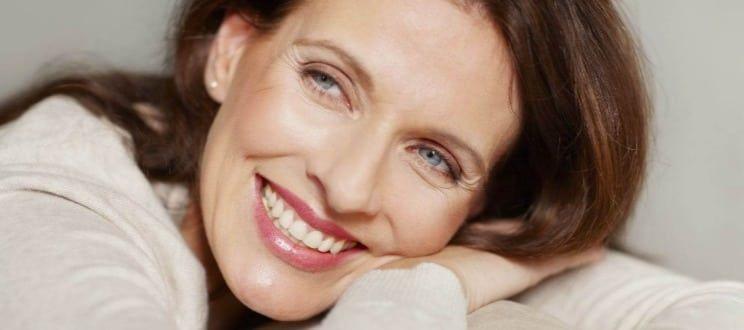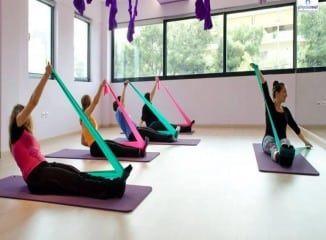
Menopause – Osteoporosis – Pilates – Acupuncture
As is well known, the nature of woman is the menstrual period. When it stops, then we say that the woman is in menopause. Menopause occurs naturally as a woman ages and is often associated with various problems such as heart disease and osteoporosis (decreased bone density). This happens because the levels of the hormones estrogen and progesterone (necessary for menstruation and ovulation) decrease.
Other menopausal disorders

The lack of hormones that regulate menstruation also causes hot flashes, fatigue, headaches, intellectual and mental disorders such as moodiness, memory and thinking disorders and even depression. In addition, it creates sleep disturbances, vaginal dryness, night sweats, joint pain, weight gain. Finally, the desire to urinate is often created and often incontinence.
Osteoporosis
Estrogens are the hormones that protect bones. Their reduction implies a reduction in bone mass. It has been documented that approximately half of menopausal women will suffer a fracture, mainly in the hips, wrists and spine. Especially, in early menopause, the hormones drop sharply and the symptoms are more painful.
Aggravating factors of osteoporosis in women
* The family history. Hereditary factors such as osteoporosis or height reduction or some
deformity in the spine, aggravates osteoporosis.
* Women with small bones.
* History of fractures in women. The condition is aggravated when these fractures have created height loss or kyphotic patterns.
* History of various diseases and medication can damage bones in menopause.
* Women who do not take in substances necessary for bones (calcium, vitamins, metal, magnesium, potassium), have more prone bones during menopause.
* Sedentary life, without activities.
* Smoking and excessive alcohol consumption have aggravating substances that pass into the bones.
* Losing weight is harmful to bones. Care needs to be taken with simultaneous exercise and diet.
Prevention
* Building healthy bones from an early age through proper exercise.
* Relaxation techniques with proper rhythm and depth of breathing, muscle relaxation and massage.
* Pelvic floor muscle exercises improve forms of urinary incontinence.
* Regular exercise to protect against heart disease, diabetes, osteoporosis, etc.
* To prevent cardiovascular diseases, a healthy diet and maintaining a normal weight is necessary.
* Fighting smoking and excessive alcohol.
* Bone density measurement at the right time according to the doctor's approval, which informs us if there is a risk of fracture.
* Necessary medication depending on the stage of osteoporosis.
Osteoporosis and Pilates

It has been found by research that exercise is vital for our bones as it stops bone loss. Pilates is an exercise ideal for osteoporosis due to the gentle loading of the bones. Exercises can be done either with auxiliary equipment or only with the body weight of each exerciser. The aim is to straighten the trunk, correct kyphotic patterns and muscle strengthening of neglected muscles and joints, which complement each other contribute to healthier and stronger bones. Pilates is a correct exercise because it strengthens balance, proprioceptiveness and kinesis, thus, it teaches the person to protect his body in his daily activities, giving him self-confidence and avoiding any kind of fracture as mentioned in the specific article.
For a safer class, the deeper knowledge of the Pilates teacher is necessary to avoid any fractures in sensitive bone points.
Incontinence and Pilates
Pilates is an exercise for strengthening the pelvic floor muscles. In particular, the activation of the deep muscles increases the intra-abdominal pressure by regulating the function of the internal organs as well as the strengthening of the perineum helps to control the urinary system.
Pilates and wellness
Pilates basically uses slow and up to a point deep breathing. Proper activation of the diaphragm is proven to lead to a calm mental state by combating the mental disorders of menopause.
Menopause and Acupuncture
Acupuncture is one of the effective methods in combating menopause symptoms (hot flashes, insomnia, as mentioned above) and is performed by specialist physiotherapists and doctors. Acupuncture is performed with fine needles in three-dimensional areas that mark reflex points of the body that we want to intervene. In menopause especially, for emotional disorders, they are placed along the legs, arms, shoulders and on the little toe. Up to 20 needles are inserted with a slight sting which then gets used to it and does not bother. It is good that the frequency of the treatments is 2 times a week from 20-30 minutes for 3-6 weeks.
Statistically, acupuncture has been shown to be effective in reducing hot flashes and insomnia, with no side effects especially when done regularly. The results are long lasting.
Conclusions
Menopause is an inevitable and normal part of women's lives. With the right combination of exercise, diet, acupuncture and medication, we can manage to avoid the symptoms of menopause while maintaining our health at normal levels.

No Comments